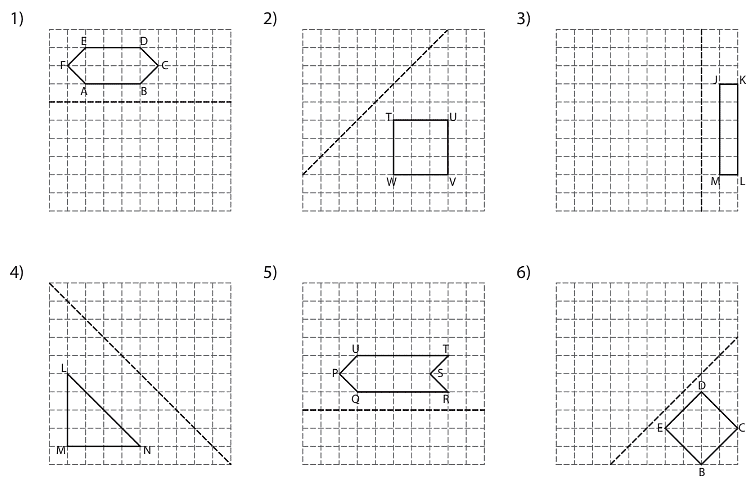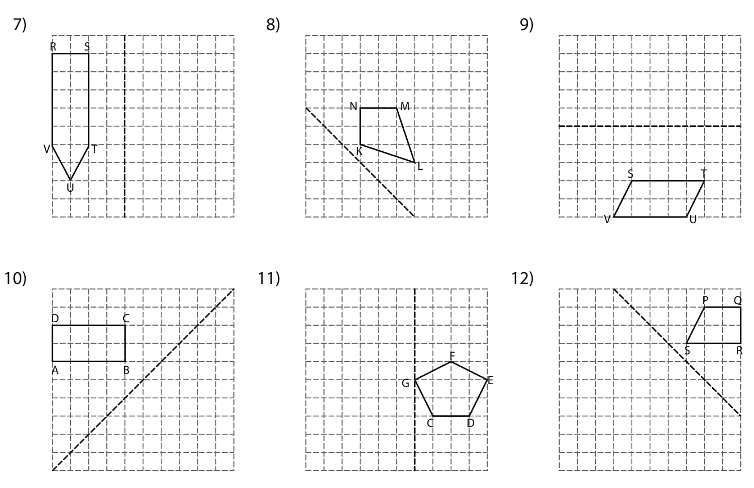SSC MTS / SSC GD Exam > SSC MTS / SSC GD Notes > General Intelligence and Reasoning for Competitive Exams > Worksheet: Mirror Image
Worksheet: Mirror Image | General Intelligence and Reasoning for Competitive Exams - SSC MTS / SSC GD PDF Download
Graph the image of the given figure across the mirror line.


You can access the solutions to this worksheet here.
The document Worksheet: Mirror Image | General Intelligence and Reasoning for Competitive Exams - SSC MTS / SSC GD is a part of the SSC MTS / SSC GD Course General Intelligence and Reasoning for Competitive Exams.
All you need of SSC MTS / SSC GD at this link: SSC MTS / SSC GD
|
110 videos|151 docs|91 tests
|
FAQs on Worksheet: Mirror Image - General Intelligence and Reasoning for Competitive Exams - SSC MTS / SSC GD
| 1. What is a mirror image in geometry? |  |
Ans. A mirror image in geometry refers to the reflection of a shape or figure across a designated line, known as the mirror line. The resulting figure appears as if it has been flipped over the mirror line, creating a symmetrical counterpart.
| 2. How do I identify the mirror line for a given figure? |  |
Ans. To identify the mirror line for a figure, look for a straight line that serves as the axis of symmetry. This line can be horizontal, vertical, or diagonal and should divide the figure into two identical halves. The points on one side of the mirror line will have corresponding points on the other side that are equidistant from the line.
| 3. What steps should I follow to graph a mirror image? |  |
Ans. To graph a mirror image, follow these steps:
1. Identify the mirror line.
2. Measure the distance of each point of the original figure from the mirror line.
3. Plot the corresponding points on the opposite side of the mirror line at the same distance.
4. Connect the new points to form the mirror image of the original figure.
| 4. Can all shapes be reflected to create a mirror image? |  |
Ans. Yes, all shapes can be reflected to create a mirror image. However, the appearance of the mirror image may vary depending on the symmetry of the original shape. Symmetrical shapes will have identical mirror images, while asymmetrical shapes will result in a mirror image that may look very different.
| 5. What are some common uses of mirror images in real life? |  |
Ans. Mirror images are commonly used in various fields, including art, photography, architecture, and design. They are used to create symmetrical designs, enhance visual effects, and in reflective surfaces like mirrors and water. Additionally, understanding mirror images is crucial in fields like engineering and physics, where symmetry plays a key role.
Related Searches




















